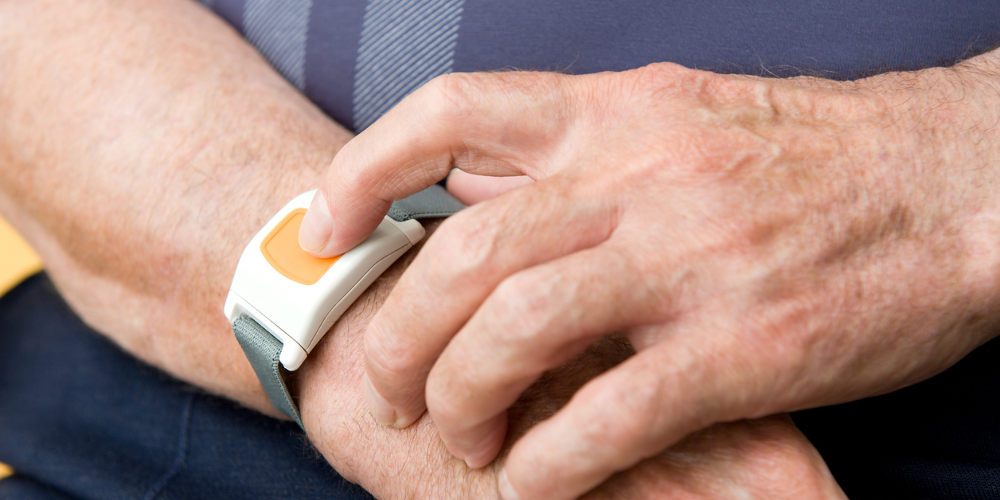PERS: A Guide to Evolving Personal Emergency Response Systems
How device makers and platform providers, as well as advances in cellular wireless technology have accelerated the uses and benefits of PERS and mPERS.

It's an exciting time to engage in mobile personal emergency response systems services.
Although personal emergency response systems (PERS) in one form or another have been around for what seems like forever, the market continues to expand and deliver greater sophistication and value.
Many of us who have been around longer than we’re willing to admit likely even built our own systems back when manufacturers were not focused on this space.
Now as our customer base continues to age, manufacturers are committed and delivering good choices for quality services. A variety of elements have affected the evolution of this sector including change and growth in technology, marketing to new verticals and, of course, the need created by a large population that is living longer than past generations with requirements for care away from traditional hospitals and institutions.
Let’s take a look at how device makers and platform providers, along with the affordable implementation of cellular wireless technology, have accelerated the uses and benefits of this increasingly vital life-safety category.
Best Location Information Relies on Combination
The key feature of most mobile PERS (mPERS) solutions is the ability to track a user with the built-in GPS location-based tracking feature. It’s important dealers understand that just because a manufacturer calls its product mPERS, it doesn’t necessarily guarantee that the product uses GPS and the best technology available.
In fact, it doesn’t even assure you what technology is used to attempt location accuracy. Knowing the type of location-based technology utilized is essential and the first step in deciding on an mPERS vendor partner.
In the past and even sometimes in this current market, some products simply use A-GPS, or assisted (or augmented) global positioning system, as their sole technology. Although A-GPS is valuable when used in conjunction with GPS, alone it pales in comparison and really doesn’t offer a lot of value.
Both technologies help determine location; GPS devices determine location information by directly communicating with satellites moving around the Earth, while A-GPS devices determine location information from network stations based on GSM, CDMA or LTE technology employed in the mobile terminal.
Because GPS devices communicate with satellite, they perform best under clear sky conditions and when satellite is reachable without any interference. As A-GPS devices are connecting with cellular network stations, they communicate even in cloudy atmosphere and terrible satellite conditions, but will have problem when the cell network is unreachable.
In these instances A-GPS devices fall back to the GPS feature for a more accurate location, if available. When these two technologies are used in conjunction properly, it allows your central monitoring center to know where the subscriber is when they press their emergency button or when their fall detector is activated.
Systems that use A-GPS in tandem with GPS bring up a location faster to an operator rather than waiting for the satellites to analyze and deliver.
WiFi Access Points, 4G Gain Momentum
We now see another element beginning to make some noise in the industry. Some manufacturers have announced that they will layer in WiFi location services along with GPS. This will address the persistent issue of gaining a location of individuals who are indoors or in a large building.
Using the WiFi access points database, monitoring centers can now assess the location of an individual in a building. Did you ever “check in” with Facebook while at an airport and the first choice is the actual gate where you are located? Well this is how Facebook and other accomplish this. You don’t need to be logged into the WiFi; it uses their location without the need of authentication.
Meanwhile, the most important element of any mobile or cellular device today is the assurance that it is certified as a 4G device. Carriers have announced that the networks will not activate any new 3G systems, radios, telephones, etc. after December 31, 2018.
It’s also been communicated to the public that the entire 3G cellular network will be retired and shut down in its entirety no later than December 31, 2022.
The good news regarding this migration to the 4G network comes from the other LTE — long term evolution. This new 4G network is anticipated to have a lifespan that extends to mid-2030s and possibly beyond.
With everyone concentrating on minimizing attrition, an essential element is to make sure you are deploying current products that won’t require replacement or will start to have erratic performance in the very near future.
It’s borderline negligent to deploy any cellular products that are not 4G at this point; they’re available and are the responsible choice when selecting technology for your clients.
Communicate with your manufacturing and platform providers. There are many solid companies to choose from like Anelto, Climax, MobileHelp and more that will educate to make a responsible decision. Working with wireless partners is not a cut-and-dried process, but you must ask the hard questions to offer top services to your subscribers.
If you enjoyed this article and want to receive more valuable industry content like this, click here to sign up for our FREE digital newsletters!

Security Is Our Business, Too
For professionals who recommend, buy and install all types of electronic security equipment, a free subscription to Commercial Integrator + Security Sales & Integration is like having a consultant on call. You’ll find an ideal balance of technology and business coverage, with installation tips and techniques for products and updates on how to add to your bottom line.
A FREE subscription to the top resource for security and integration industry will prove to be invaluable.















A little misleading with regards to weather’s impact on GPS reception: “Because GPS devices communicate with satellite, they perform best under clear sky conditions and when satellite is reachable without any interference. As A-GPS devices are connecting with cellular network stations, they communicate even in cloudy atmosphere and terrible satellite conditions, but will have problem when the cell network is unreachable.”
Weather conditions, precipitation and clouds in particular, have negligible impact on GPS reception. See:
http://www.gpsinformation.net/gpsclouds.htm